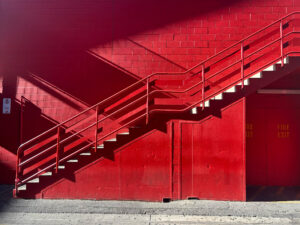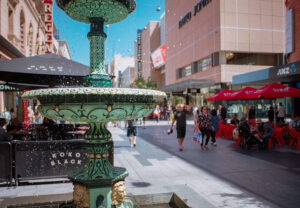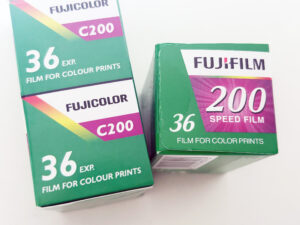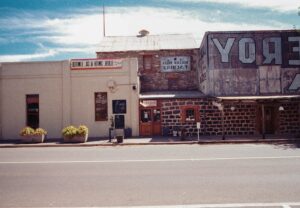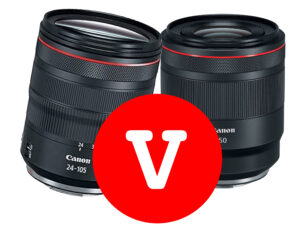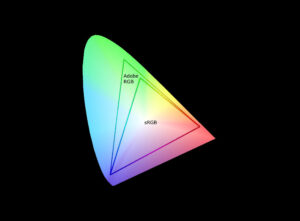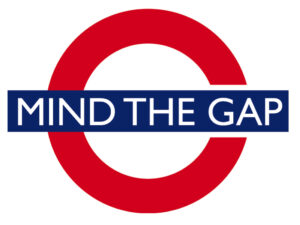So why does ISO matter more than you think? Whether you’re shooting digital or film, the ISO setting (or film speed) plays a huge role in how your final image looks. It controls your camera’s light sensitivity, but it also introduces side effects—film grain in analogue photography, and sensor noise in digital.
Understanding this relationship is essential to balancing exposure, sharpness, and aesthetic feel in your photography. In this article, we’ll break down exactly how ISO works, why higher ISO means more grain or noise, and how you can use this to your advantage.
What is ISO?
ISO is a measure of a film or sensor’s sensitivity to light. The lower the ISO, the less sensitive it is (requiring more light). The higher the ISO, the more sensitive it is (requiring less light).
- ISO 100–200: Great for bright light, daylight shooting.
- ISO 400–800: A flexible range for general use.
- ISO 1600+: Ideal for low light, but comes with more grain or noise.

While ISO has the same basic function in both film and digital, the side effects are different.
In Film: ISO Affects Grain
In traditional film photography, ISO (ASA) is baked into the film emulsion itself. A higher ISO film has larger, coarser silver halide crystals, which produce more visible grain.
| ISO | Description | Grain Characteristics |
|---|---|---|
| 100 | Slow film | Fine grain, high sharpness |
| 400 | Medium speed | Balanced grain and contrast |
| 800+ | Fast film | Noticeable grain, softer detail |
Examples:
- Kodak Portra 160 – Very fine grain and soft colours.
- Ilford HP5+ 400 – Classic black and white film with visible, pleasing grain.
- CineStill 800T – High-speed film with glowing halation and cinematic grain.


Takeaway: Grain is physical. It adds texture and mood but reduces sharpness.
In Digital: ISO Affects Noise
In digital cameras, ISO is an electronic amplification of the signal from the sensor. A higher ISO boosts the signal—but also boosts the unwanted background information, resulting in noise.
Types of Digital Noise:
- Luminance Noise – Grainy, monochromatic specks (similar to film grain).
- Chrominance Noise – Blotchy colour specks (often magenta/green).
- Banding – Horizontal or vertical lines, especially in shadows at very high ISOs.
| ISO | Image Result |
|---|---|
| ISO 100–400 | Clean, sharp images with rich colour |
| ISO 800–1600 | Minor noise, usable with post-processing |
| ISO 3200+ | Noticeable noise, reduced dynamic range |
Modern sensors (like in Leica M11 or Sony A7 IV) perform better at high ISOs, but even the best will introduce some noise above ISO 6400.
ISO, Exposure, and the Triangle
ISO is one side of the Exposure Triangle, alongside shutter speed and aperture. Raising ISO allows you to use faster shutter speeds or smaller apertures—but at a cost to image clarity.
| Increase ISO | Gain | Trade-Off |
|---|---|---|
| ✅ Better low-light shots | ✅ Faster shutter speeds | ❌ More grain or noise |
| ✅ Flexibility for handheld shooting | ✅ Deeper depth of field | ❌ Less dynamic range |
Grain vs Noise: Are They the Same?
Not quite. Though both affect image texture, they’re fundamentally different:
| Feature | Film Grain | Digital Noise |
|---|---|---|
| Origin | Chemical crystals | Electronic signal interference |
| Look | Organic, random | Often blotchy or patterned |
| Perception | Often embraced | Usually undesirable |
| Control | Fixed by film stock | Adjustable via ISO and software |

Interestingly, many digital photographers try to add film grain to mimic analogue aesthetics—while many film shooters try to minimize grain using slower film or careful development.
Tips to Control ISO-Related Quality Loss
For Film Shooters:
- Use slower film (ISO 100–200) for fine detail and less grain.
- Develop carefully—pushing film increases contrast and grain.
- Use tripod or shoot in brighter conditions to avoid needing fast films.
For Digital Shooters:
- Shoot at the lowest ISO possible for clean images.
- Use noise reduction in Lightroom or DXO PureRAW.
- Expose to the right (ETTR)—slightly overexpose to retain detail in shadows.
- Use full-frame sensors for better high-ISO performance.
When Grain or Noise Is Desirable
Grain and noise aren’t always bad. In fact, they can be creatively useful:
- Film grain adds a tactile, timeless quality.
- Digital noise can give mood in street or night photography.
- In black-and-white images, grain or noise can add drama and texture.
Many legendary photos by Henri Cartier-Bresson, Daido Moriyama, or Trent Parke are not clean—but they are alive.
Embrace the Trade-Offs
The relationship between ISO, grain, and noise is a balancing act. Whether you’re shooting digital or film:
- Lower ISO = cleaner images
- Higher ISO = more texture, more flexibility
But with higher ISO comes creative opportunity—and in some cases, signature character.
So the next time you’re choosing ISO, ask yourself: Are you chasing perfection or expression?
Bonus: Quick ISO Reference Guide
| ISO | Film Grain (Analogue) | Sensor Noise (Digital) | Best Use |
|---|---|---|---|
| 100 | Very fine | Extremely clean | Landscapes, studio |
| 400 | Moderate | Clean to moderate | Street, general purpose |
| 1600 | Heavy grain | Moderate noise | Events, handheld low-light |
| 3200+ | Intense grain | High noise | Artistic shots, emergencies |




